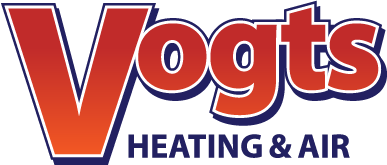
A furnace is almost always a background player for your home, helping keep you warm during the cold winter months. It regularly isn't noticed until something breaks down.
One root cause might be that your furnace has a cracked heat exchanger. It can be a safety risk, so it’s critical to familiarize yourself with the symptoms of a cracked heat exchanger and what you should do if you suspect that is the problem.
What Is a Heat Exchanger in a Furnace?
A heat exchanger transfers heat from the combustion chamber of your furnace to the air that circulates throughout the ventilation. It generally handles this through coils or tubes that heat the air while functioning as a barrier to keep gas produced in the combustion chamber, called flue gasses, from getting out into your home.
Is a Cracked Heat Exchanger Dangerous?
Because of its central role, it isn't surprising that a cracked heat exchanger can pose a risk. A crack in the heat exchanger can allow dangerous gasses – such as carbon monoxide, which can be lethal – to be distributed through your home.
For this reason, never turn on your heating if you believe there's a crack in the heat exchanger, as this could make the entire household sick. Reach out to an HVAC professional right away if you are worried your heater has a cracked heat exchanger that should be repaired.
Four Warning Signs of a Cracked Heat Exchanger:
- Furnace switches off: A cracked heat exchanger may cause your furnace to turn off.
- Strange Smells: If the air coming out of your furnace has an intense chemical scent, it may be an indicator that gasses are seeping through cracks in your heat exchanger. These byproducts, which can smell like formaldehyde, are a common warning sign.
- Carbon monoxide alarm initiates or you recognize poisoning symptoms: If a cracked heat exchanger is releasing carbon monoxide inside your home, your carbon monoxide alarm could go off or household members might experience signs of carbon monoxide poisoning. Side effects include headaches, dizziness, weakness, nausea, vomiting or feeling tired. If your alarm goes off or you feel unusually tired, get out of the home immediately and then call for help.
- Soot: If you spot black sooty buildup around the exterior of your furnace, it’s another sign something might be seriously wrong.
What You Can Do if a Furnace Heat Exchanger is Cracked
If you suspect your furnace has a cracked heat exchanger, contact a pro with extensive experience in furnace installation Pocatello as soon as possible so they can take a look at your system and, if required, start a furnace heat exchanger replacement. Costs will vary depending on the situation, but estimates often hover around $1,000 to $3,000.
However, the good news is that heat exchangers are generally covered by the warranty. You’ll want to confirm the warranty paperwork on your furnace, because while the warranty may not cover the entire cost of repairs, it could significantly lower your bill.
How to Avoid a Cracked Heat Exchanger in Your Home
One of the best ways to avoid problems in your furnace overall is through regular furnace maintenance. Furnaces offer the most benefits when they run efficiently. Hiring a skilled professional to check your furnace for worn-out parts, clogs in the air filters and other common problems can help you avoid getting a big bill later on.
It’s also a good idea to inspect your furnace filters every few months – it’s recommended some filters be changed every 90 days or sooner if they are dirty or grimy. While the filters are not part of the heat exchanger itself, the strain of pulling air through a clogged filter makes your entire furnace work harder to complete its job. And the harder your furnace has to work, the more strain components like the heat exchanger will experience.
